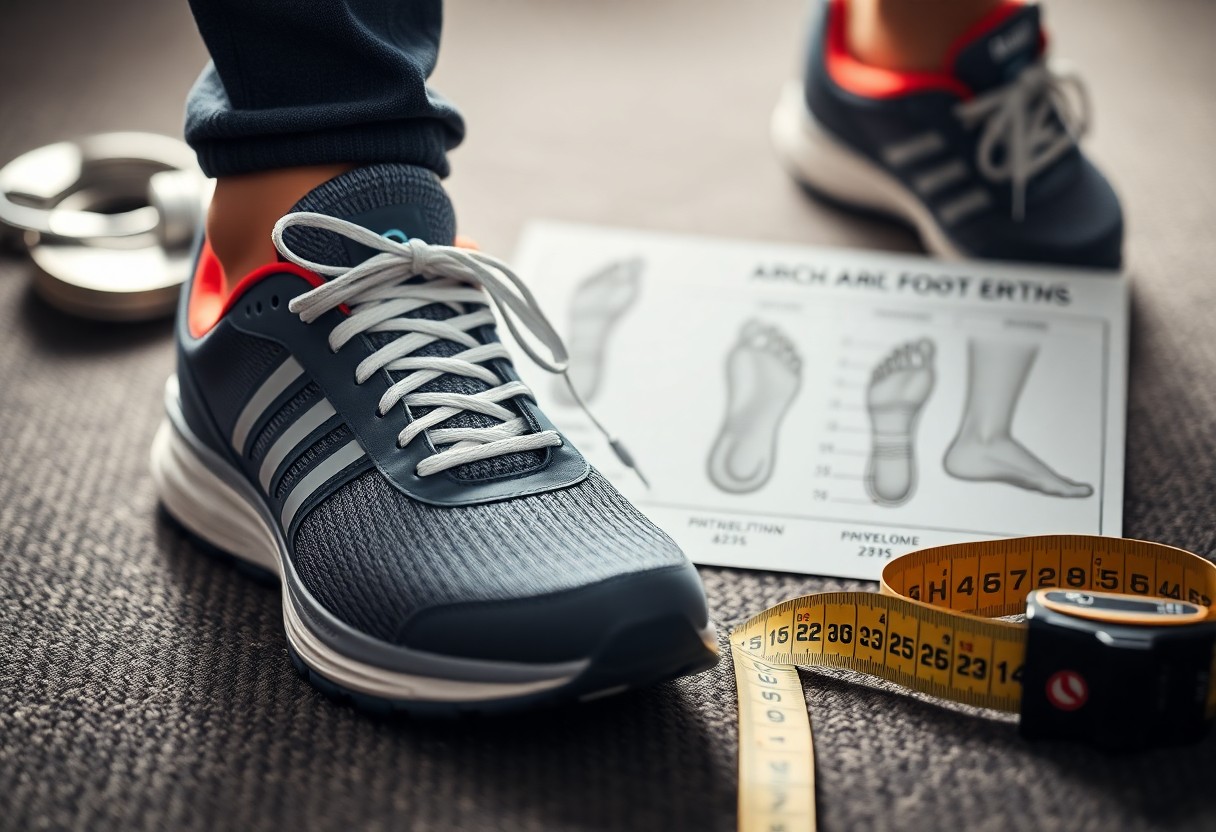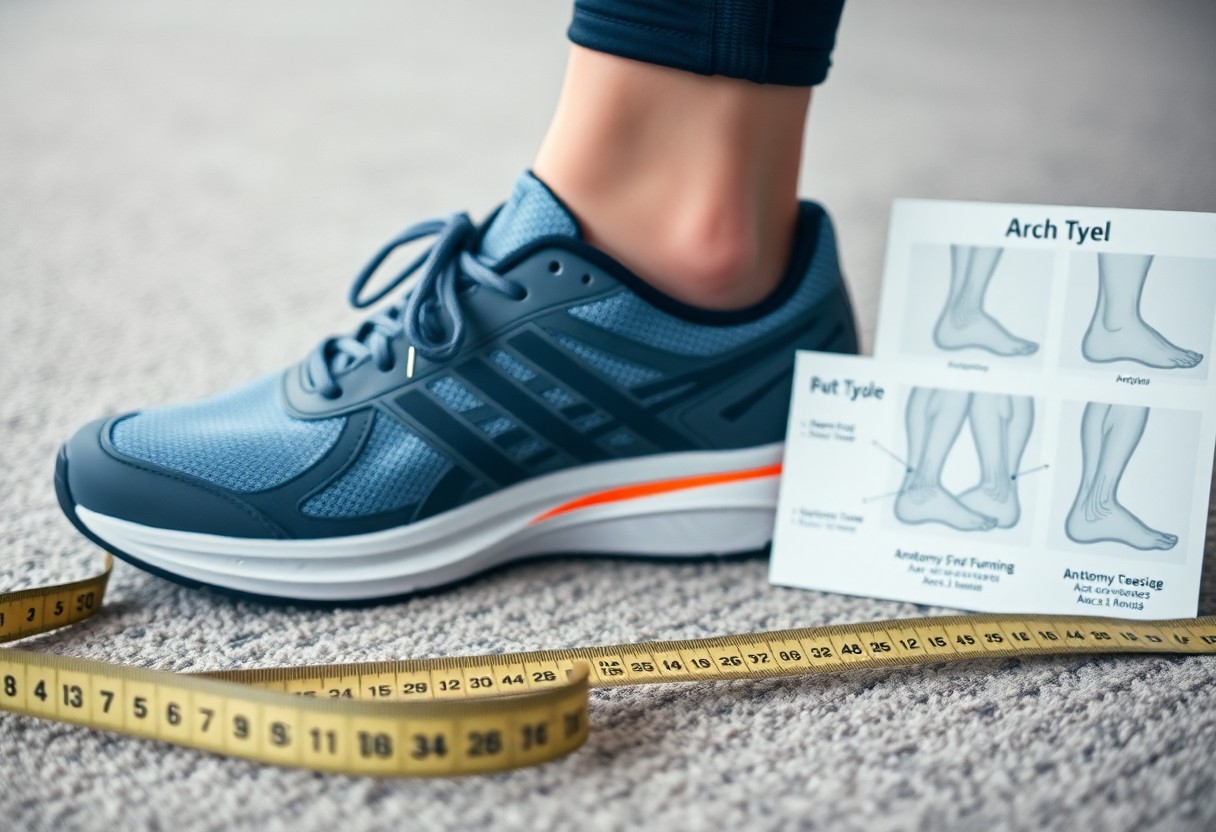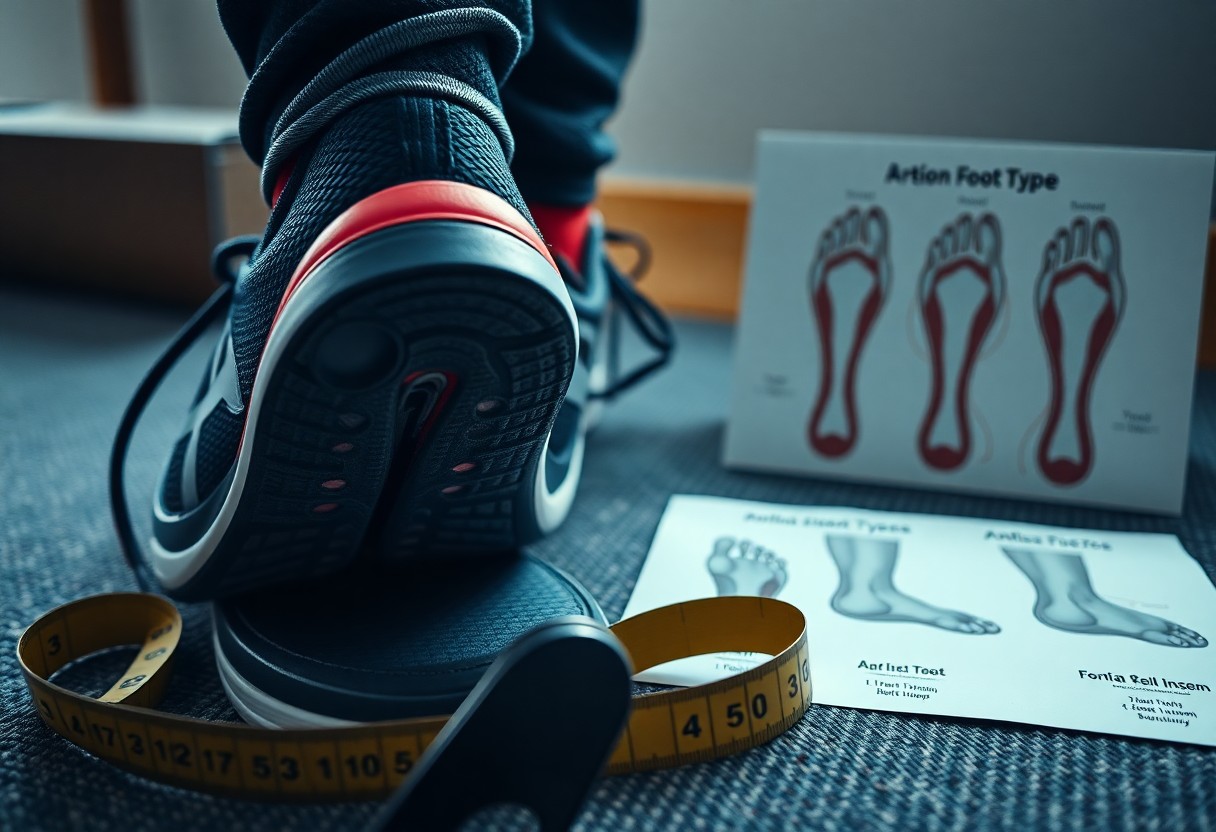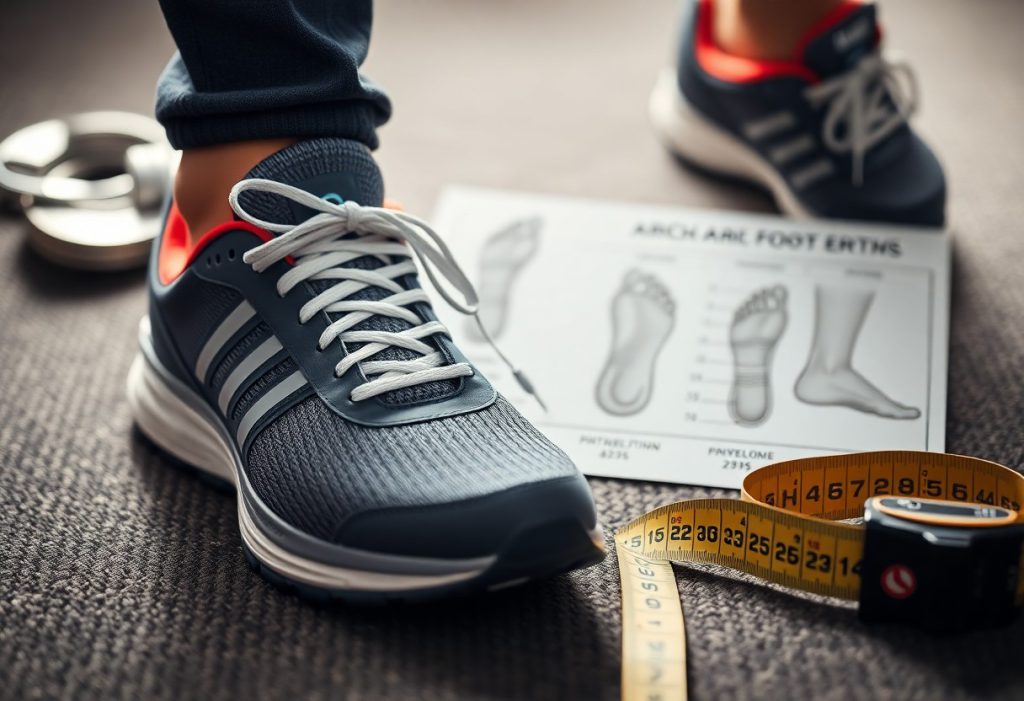Providing the right support for your feet goes beyond simply adding arch support to your shoes. It might surprise many to learn that the majority of people do not actually need arch support in their footwear. Research indicates that avoiding arch support can boost the strength of your foot muscles over time. Relying on artificial supports can lead to muscle weakness, as the human foot is naturally designed with arches that flex and adapt to different surfaces. Restricting this natural movement with rigid supports could negatively impact your foot health in the long run. This comprehensive article will shed light on the science behind arch support, helping you make better-informed choices about your foot health.

Unpacking the Historical Development of Arch Support in Footwear
The natural support system of your feet has played a crucial role in footwear design for centuries. The concept of arch support became particularly prominent in the 1920s when Dr. William Scholl introduced commercial orthotics to the market. Before this innovation, people relied on the natural strength and flexibility of their feet for support. This historical perspective provides valuable insights into how our understanding of foot health has evolved over time and challenges the assumptions about the necessity of arch support.
Tracing the Evolution of Traditional Footwear Practices
Examining the evolution of footwear reveals that ancient cultures primarily used simple, flat sandals or often went barefoot. These practices promoted natural foot development and strength. Our ancestors’ feet remained strong and flexible without the need for artificial supports, as evidenced by studies on indigenous populations who continue to practice traditional footwear habits. This historical viewpoint emphasizes the importance of maintaining natural foot mechanics for overall foot health and wellness.
Evaluating Modern Shoe Industry Standards and Their Impact
By the mid-20th century, particularly in the 1950s, shoe manufacturers began to widely incorporate built-in arch support as a standard feature in footwear. Today, a significant majority of modern shoes include structured arch support, which has become a common expectation despite limited scientific evidence supporting its necessity for everyone. This trend reflects changes in consumer demands and industry practices, leading to important questions regarding how these designs affect foot health over time.
Currently, a staggering 70% of modern shoes come equipped with arch support, highlighting its prevalence. However, research published in the Journal of Foot and Ankle Research suggests that over-dependence on arch support may lead to muscle weakness in the feet. As a result, many podiatrists are now recommending occasional barefoot walking and wearing minimally supportive shoes to help maintain natural foot strength and functionality.

Diving Deep into the Complex Structure of the Foot
The human foot consists of 26 bones, 33 joints, and over 100 muscles, functioning most effectively when given the freedom to move. The foot’s arch acts as a self-supporting structure that gains strength from regular use, while artificial support can weaken it over time. Studies indicate that 75% of individuals wearing conventional shoes with arch support experience reduced foot muscle activity, which can diminish their natural strength over time.
Revealing the Wonder of Natural Foot Mechanics
Your foot’s inherent design is an impressive feat of engineering, featuring a complex system of self-support. Walking barefoot or in minimal shoes allows your feet to achieve a full range of motion, enabling arches to flex and strengthen naturally. Research shows that people who frequently walk barefoot or choose minimal footwear develop stronger foot muscles and more stable arches than those who rely on supportive shoes. This highlights the critical role of natural movement in promoting foot health and vitality.
Maximizing Muscle Function and Development Through Natural Movement
Interrupting your foot’s natural movement can impede its growth and development. Engaging your foot muscles in natural activities is essential for maintaining their strength. Research published in Nature has demonstrated that wearing shoes without arch support aids in developing stronger intrinsic foot muscles. This connection underscores the importance of natural movement for achieving optimal foot health.
Moreover, it is vital to consider the implications of wearing shoes with built-in arch support. Such footwear may lead to less engagement of foot muscles, resulting in potential weakness over time. Studies have indicated that transitioning to minimal footwear can significantly increase foot muscle strength by up to 60% within just eight weeks. However, it is crucial to approach this transition gradually, especially if you have pre-existing foot conditions, to minimize the risk of injury.
Investigating Research and Evidence Relating to Foot Health
If you’re eager to understand the science behind arch support, numerous studies reveal that your feet can become stronger without the need for artificial support. Various investigations highlight that natural foot movement promotes better muscle development and boosts arch stability, emphasizing the essential role biomechanics play in maintaining foot health.
Focusing on Key Scientific Research Surrounding Arch Support
Among the most significant research findings, a study published in Nature demonstrates that individuals who wear minimal footwear develop foot muscles that are 50% stronger compared to those who wear traditional supportive shoes. This compelling evidence supports the idea that regular movement and exercise allow your feet to maintain their arches naturally, reinforcing the value of choosing the right footwear.
Conducting a Comparative Analysis of Footwear Choices Across Cultures
Contrasting the Experiences of Traditional and Minimal Footwear Users
| Traditional Shoe Users | Minimal Shoe Users |
| Exhibit higher rates of flat feet | Demonstrate superior arch strength |
| Show weaker foot muscles | Exhibit stronger foot muscles |
A comprehensive analysis across different populations highlights significant disparities in foot health. Your foot structure can adapt dramatically based on the types of shoes you choose to wear, emphasizing the importance of footwear in shaping foot health outcomes.
Insights from Global Population Studies
| Developed Countries | Barefoot Communities |
| 20% flat foot occurrence | 3% flat foot occurrence |
| Higher reliance on arch support | Natural arch strength |

Examining the Support Paradox in Footwear Choices
Challenging commonly held beliefs, overreliance on arch support in shoes can undermine your feet’s natural strength. The human foot is intricately designed with a network of muscles, tendons, and ligaments that work together to provide natural support. When artificial arch support takes over this role, your foot muscles may become less engaged, leading to gradual weakening.
Investigating the Cycle of Dependency Related to Arch Support
The consistent use of arch support creates a harmful cycle. Feet can become dependent on external support, resulting in muscle atrophy. Research has shown that 70% of individuals who regularly use arch support report increased discomfort when walking without their supportive shoes, underscoring the development of this dependency.
Understanding the Link Between Muscle Weakness and Arch Support
Wearing shoes with built-in arch support could weaken your intrinsic foot muscles by as much as 50%, according to findings published in Nature. This weakening compromises the natural arch support system of your feet, potentially leading to conditions such as flat feet and other related issues. It’s important to recognize that this muscle weakness can extend beyond your feet, as weakened foot muscles can adversely affect your overall posture and balance. Research indicates that individuals who transition to minimal footwear often experience a 60% increase in foot muscle strength within six months.
Discovering Natural Alternatives for Optimal Foot Health
For those interested in moving away from traditional arch support, several natural options can enhance foot strength. These approaches focus on allowing your feet to function as they were biologically designed, promoting the development of stronger foot muscles and more stable arches through natural movement.
Choosing Minimalist Footwear to Encourage Natural Movement
Minimalist shoes, characterized by zero drop soles, wide toe boxes, and flexible materials, encourage natural foot movement. These designs allow your feet to move freely, aiding in the maintenance of proper foot mechanics and fostering natural arch strength. Studies reveal that regular use of minimal footwear can enhance foot muscle strength by up to 60% through daily activities.
Implementing Safe Strategies for Transitioning to Minimal Footwear
When considering a shift to minimalist footwear, it’s essential to approach this change carefully and gradually for your safety and comfort. Start by wearing minimal shoes for short periods, gradually increasing the duration over several weeks. This strategy minimizes the risk of overuse injuries as your feet adapt to their newfound freedom, ensuring a smoother transition.
A successful transition should ideally include specific exercises to strengthen your feet. Begin with 10-15 minutes per day in minimal shoes, gradually adding an additional 5-10 minutes each week. Incorporate exercises such as toe spreads and short barefoot walks on safe surfaces. This incremental approach helps to mitigate the risk of common transition injuries while effectively building your natural arch strength.
Considering Medical Factors in Foot Health Management
It’s vital to recognize that your foot health requires personalized attention. While natural foot movement is beneficial for muscle strength, certain medical conditions may require specific support. Factors such as your foot structure, activity level, and any pre-existing conditions will play a pivotal role in determining your ideal footwear choices.
Recognizing When Arch Support Is Essential for Foot Health
Contrary to popular belief, arch support is not universally necessary. However, individuals with acute injuries, severe flat feet, or specific medical conditions might benefit from temporary or permanent arch support. Research indicates that only 10-20% of the population genuinely requires specialized arch support for medical reasons, underscoring the importance of personalized assessments.
Establishing Guidelines for Professional Foot Health Assessments
To ensure you make informed choices about your footwear, it is advisable to consult a foot health professional. Comprehensive assessments should include gait analysis, evaluation of foot structure, and review of medical history. These components are crucial for determining whether you need arch support or if transitioning to minimal footwear is a feasible option.
Support from a qualified professional can provide valuable insights and guidance for your foot health journey. A thorough assessment should encompass measuring arch flexibility, evaluating muscle strength, and analyzing walking patterns. Your healthcare provider must also consider your daily activities and any past foot injuries to create an effective treatment plan tailored to your specific needs.
Evaluating Footwear Choices and Their Impact on Foot Health
Your choice of footwear plays a critical role in your foot health. It is now clear that arch support is not essential for most individuals and can, in fact, contribute to muscle weakness over time. Your feet are endowed with innate strength and flexibility, functioning optimally when allowed to move as intended by nature. If you’re contemplating a transition to minimal footwear, starting this journey gradually will help your feet adapt efficiently. The evidence strongly suggests that permitting your feet to function without artificial support can lead to stronger muscles and enhanced foot health for the majority. Always consider your individual needs and consult a foot health professional for tailored advice.
Common Questions About Arch Support Explained
Do healthy feet truly need arch support in shoes?
Most healthy feet do not need arch support in shoes. Studies suggest that natural foot strength develops more effectively without artificial support. The muscles and arches in your feet perform best when allowed to function naturally. This aligns with research on populations that frequently walk barefoot or prefer minimal footwear, which show stronger foot muscles and fewer arch-related problems.
Can relying on arch support weaken feet over time?
Yes, prolonged reliance on arch support can lead to weakened foot muscles. When artificial support assumes the function of foot muscles, these muscles become less active and gradually lose strength. This creates a cycle of dependency. Research published in Nature indicates that individuals who consistently wear conventional shoes with arch support often have weaker foot muscles compared to those who choose minimal footwear.
Who might genuinely require arch support in their footwear?
Some individuals with specific foot conditions, injuries, or medical issues may benefit from arch support. This includes those diagnosed with flat feet, certain injuries, or structural abnormalities. However, these situations should be evaluated by a foot health professional who can develop an appropriate treatment plan. The goal should be to restore normal foot function whenever possible, rather than relying on permanent support.
The Article Arch Support: Essential Facts About Shoe Necessities Was Found On https://limitsofstrategy.com


